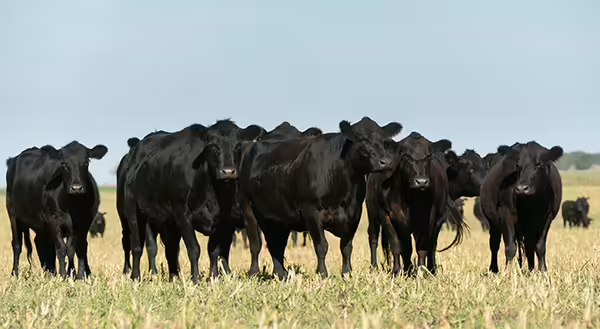
Prices for all classes of cattle remain high. Feed availability is adequate in most parts of the country, and commodity feed prices remain moderately low compared to previous years. These factors coupled with low cow inventories sets up a common conversation around feeding and breeding cull cows.
First, it will be common practice for many herds to leave bulls in longer this breeding season to increase the opportunity for cows to breed. The increase in price for a bred cow versus an open cull is an opportunity to add value. Marketing bred cows that do not fit your calving window but may fit someone else’s is generally a good practice for ranch economics.
Now, the cost for replacements may entice some to retain cows they normally would not retain. I would advise cattlemen in seedstock herds and those focused on genetics to stay disciplined to selection criteria for fertility. Making exceptions for late-bred cows could have a negative impact on herd productivity in the future. It is smart to add value to cows but retaining in your herd may not be the answer.
A popular trade last year was buying healthy, thin cull cows in the fall (seasonal price low) and marketing in the spring. Health, fitness, and thin flesh are important pieces of making this trade work. Not only does adding weight increase value, but adding condition increases the price paid per pound. Profitability also hinges greatly on feed cost and animal gains. Procuring economical feedstuffs should be doable with current hay and grain supplies.
So, does feeding your open cows make sense this year? Many times, a short feeding period of 60-90 days can add enough weight to move thin cows into a more desirable price range. Market volatility and headline-sensitive markets can create a high-risk environment when buying and feeding cull cows. There are very few if any ways to manage this market risk for feeding cull cows.
Another trending practice is to tap into local beef markets. Young, open cows may be good candidates for grinding into hamburger to be sold locally. Consumers have renewed interest in sourcing beef from a local farmer. Obviously, ensuring a quality product is paramount, but young, fed cows can produce a great hamburger to be marketed locally for a premium.
In many cases, cull cows account for approximately 20% of the returns to a cow-calf operation. Selling cull cows before seasonal lows can be a good strategy to increase revenue. With elevated cull cow prices, only thin cows with good health and fitness should be candidates for feeding. Bringing in cows or retaining cows that have not bred could pose significant risk to herd health. Be mindful of proper biosecurity protocols.
*Originally published in Progressive Cattle